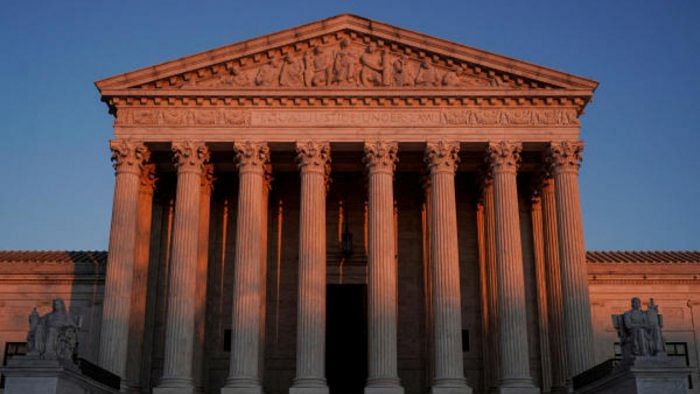
By Mihir Sharma
For Indians, the furor in the US over the Supreme Court’s judgment on affirmative action in universities feels oddly familiar. Like the US, India has long had programs designed to help members of historically disadvantaged groups attend college; and, as in the US, these have often been resented by other groups.
Many Indian Americans, who feel that they — like others of Asian descent — have an unfairly hard time getting into elite universities, seem to be doubly irate at any echo of the system they left behind in India. Most members of the Indian diaspora in the US are, after all, from “upper” castes, and India’s quota system is designed to benefit other groups.
The similarities, however, conceal important differences. India’s system of “reservations” for disadvantaged groups was written explicitly into the Constitution when it came into force in 1950 and has been strengthened by various amendments since then. It sets explicit quotas for “lower” castes of various sorts. And it extends to public sector jobs, not just university admissions.
Only colleges that receive no state aid aren’t required to maintain similar quotas. While the current government has promised to extend the system to private educational institutions, it has not yet followed through.
The US system looks, to Indians, like an opaque halfway house in comparison to ours. In India we know in advance exactly how many members of the oppressed Dalit community will get into the exclusive Indian Institutes of Technology every year, for example. And those admitted are chosen through a transparent examination, just like everyone else — it’s just that the cutoff mark to get in is separately determined. Such transparency has been illegal in the US since a 1978 Supreme Court decision against a University of California medical college.
The systems are different because, in many ways, their stated purposes are different. The designers of India’s reservation system — including the primary author of our Constitution, the Dalit leader Bhimrao Ambedkar — intended it as a way to open up access to elite power beyond the upper-caste Hindus and wealthy Muslims who had traditionally monopolized it.
Their motivations had little to do with economic inequality or personal growth; the system was meant to ensure the Republic of India had a substantively different nature than all the states it was replacing. Lower castes for the first time would have a significant voice and representation among the rulers, not just the ruled.
Efforts to increase diversity in American universities have, on the other hand, been justified — at least since 1978 — as being necessary to promote an all-round education. Diversity in higher education was accepted as good in and of itself; how that diversity was to be attained was left to each college, as long as it could claim that race wasn’t the only determinant. The Supreme Court has now decided that Harvard University will have to demonstrate how the race of each applicant is connected to their background and beliefs, and thus their value as a member of the incoming class of freshmen.
What’s odd here is how India’s openly quota-based rules have achieved the aims of the US system better than the US has. In public universities, at least, Indian students are far more exposed to those unlike them than their American counterparts are. Harvard’s incoming freshmen, while increasingly diverse in terms of race and ethnicity, are mostly relatively well-off — whereas in India’s best public engineering schools, people of all backgrounds are forced to engage with each other.
At the same time, state colleges are where such engagement begins and ends in India. This country’s elite — our media, our CEOs, our top lawyers, our best-known intellectuals — remains dominated by upper castes even after decades of reservations. The pressures of electoral democracy mean that politics, at least, are a little more open. Still, Ambedkar would probably be deeply disappointed by how few of the other levers of power in our country are accessible to those from historically oppressed communities.
By comparison, while the US elite may still be dominated by white men, it nevertheless looks far more open to those of different racial and ethnic backgrounds than ours does. The US approach — rendered incomplete, perhaps even duplicitous, by decades of court verdicts — has done better than India’s quota-based system at diversifying the ranks of the elite.
What’s the difference? The answer lies, surely, in who is pushing for diversity in both countries. In the US, universities and institutions fight back against crippling court verdicts to find other ways of addressing historical wrongs. Indian elite institutions feel no such pressure. They go as far as is constitutionally mandated and legally required, but not a step further.
Even after this Supreme Court verdict, can anyone doubt that US institutions will continue to work to expand the sort of people they take in? If anything, they will be more strongly committed to finding those among marginalized communities who have a compelling case for inclusion. The US Supreme Court is fighting a losing battle against diversity because, unlike in India, the battle to convince the elite has already been won.